The Making of The Martian

I really enjoyed The Martian, starring earth’s most expensive rescuee – Matt Damon. Him and a host of Go-Pro cameras. Strangely what I appreciated most about the film was that, plot-wise, lots of things didn’t keep going wrong, just to add to the tension, for the sake of it, the situation of being stranded on Mars was more than enough, and watching him “work the problem” was thoroughly entertaining. That, and the Martian landscape was pretty stunning.
In this round up I’ve gathered together some interesting articles on the making of the film, including how Go-Pro came to be involved and just how they manufactured those Martian vistas. This was also the first time that I’ve bought the book that a film is based on (even before I’d seen the film) as I’d heard such good things about Andy Weir’s original writing. I’m now looking forward to reading it all the more.
In this short clip (presumably shot on a Go-Pro), Go-Pro CEO Nick Woodman explains how the Go-Pro camera found it’s way into Ridley Scott’s hands and the film’s narrative.
The ever candid DP/30, has a nice interview with The Martian director, Ridley Scott on his career progression and filmmaking philosophy.
Editing The Martian

For an editor writing about post-production, it’s always interesting to hear how the editor toiled away to bring the film to completion, and in this Studio Daily interview with editor Pietro Scalia you can pick up plenty of tidbits about the film’s post-production workflow.
Principal photography was shot in stereo 3D with some 11 Red cameras, including Epic Dragons and Scarlet Dragons fit with Angenieux Optimo lenses, and more than a dozen GoPro Hero4 cameras… [Cutting on Media Composer 7] The team connected 10 MC systems through ISIS storage, adding “more and more drives as the project grew,” he says. “When you have that many cameras and rigs it gets complicated, but my assistants and the rest of the editorial and technical team, from the visual effects editor to the crew, make it possible for me to start editing right away… in the end, we had close to 250 hours of footage, per eye, and another 60–70 hours of GoPro footage. I couldn’t do any of it without such a great support system and having the assistants manage the storage in the ISIS and just keep track of it all as it comes in.”
Steve Hullfish has a nice long interview with Pietro over on PVC, covering his early career and collaboration with Oliver Stone, before diving into his post process and editorial philosophy on The Martian. It’s another good example of editor’s talking to editors that brings out interesting details. Well worth a read.
Part of the challenge was to keep it real and above all to retain the spirit and the humour of the book. Matt Damon did a really wonderful job in creating and giving voice to this character that you enjoy being with. Reading the script and the book there was a levity and kind of a bouncy rhythm to it. And I needed retain that through the editing process. It was about moving it along, keep it humorous, keep it tense, keeping it emotional when it needs to be. I had to balance all of these elements at the right time.
Pietro has some great advice for editors – focusing on Character, Story and Structure…
And finally is structure. Should one moment precede another moment or follow it? It will give me a different effect of what happens afterwards. We had a flashback in the middle of The Martian which was in the script where we introduce Hermes as a flashback of the accident that happened on Mars. It worked really well in the script and it’s great to start the movie without seeing the accident, but when we edited the movie following the script, the movie just came to a complete stop 40 minutes in. So we re-structured it and put the flashback at the beginning of the film. It’s a little more conventional, but it gets you going. When we find Mark Watney by himself, thinking about the crew members, we already have an image of them.
If want to learn more from Pietro you should definitely check out his BAFTA Guru Masterclass – which you can watch in full here – and get a taste of in the clip above.
Steve Hullfish has followed up his interview with Pietro, with another incredibly detailed conversation with Cheryl Potter, who is credited with ‘additional editing’ on the film. The interview is several pages long and features some great screenshots of the Media Composer bins and timelines and is well worth the time it will take to digest.
[On the dailies process] They had a team on set, DIT Mary Lobb, she would get all of the camera cards and would keep a running total of whatever was on those cards in a shared Google doc, so we could sort of spy what was happening on set and see “have they turned over” “how many takes have they done” and those camera cards would come… before I get to that part, they had an on-set colorist who was setting looks on set. They were setting CDLs (color decision lists) on set. The camera cards would come to Fluent Image, who would do our dailies and our digital negative.They had a system set up in a room with the rest of the post team. So they’d read the camera cards. They’d pull the R3D files. And they’d archive the digital negative and also send the LTO tapes so that we had an off-site backup. They would also create our transcoded DNxHD 36 media with the CDLs that had been applied on set, so we already had a dailies look set. We gave Fluent access to our ISIS, so they could put the DNxHD 36 directly on the ISIS which saved us a bunch of copying time.
UPDATE – In this BAFTA Film Sessions instalment you can hear from Pietro on his process of editing The Martian and his relationship when working with director Ridley Scott. You also get to hear from (the excellent) The Big Short editor, Hank Corwin and the way in which motion pictures handle the ‘truth’.
When we were working on The Martian, we still watch dailies. It’s part of the ritual I don’t think many people do now with the director, because everyone gets their dailies on PIX or on the computer. I was telling Ridley I really enjoy that part of it. That after the day we still watch dailies. We have the DP there, the production designers, we have wine, snacks. We watch it on a 60 inch monitor, in 3D. It helps me understand what the day was like and I get to hear the creative process of the DP and the production designer. – Pietro Scalia
Colour Grading The Martian
Stephen Nakamura is probably one of the film industry’s most accomplished colorists and was responsible for polishing The Martian‘s look. Post Perspective has a decent ‘quick-chat’ with Nakamura covering some of the intricacies of delivering various projection specifications and creating a very intense look on a VFX heavy film. If you’re into your grading it’s always worth soaking up anything Stephen has to say on the subject!
[The look] was something that we all had a sense of conceptually but it took a lot of work with Ridley, the visual effects supervisor Richard Stammers and me in the DI theater to get it to all look the way it does in the final film. Quite a few shots involved a lot of sky replacements and the addition of mountains in the background. Richard’s team created these additional elements with a combination of CGI practical plates shot in Jordan and combined them with the first unit photography of Matt Damon.So then, when I added the heavy color correction Ridley wanted for that kind of orange look he talks about, it would have an effect on every element in the shot. It’s impossible to know in advance exactly how that correction for the planet’s surface is going to look in context and in a theatre until you actually see it… We might make a change to the foreground, and the background would “break,” or vice versa. So we had quite a few sessions where Richard would sit with Ridley and me and we would figure that out shot by shot.
Music and Sound Design on The Martian
The Soundwork’s Collection is always a valuable watch, and in this 17 minute interview with composer Harry Gregson-Williams, you can learn a lot about his process of scoring the film and collaborating with Ridley Scott.
“In this day and age, unless your initials are J.W., you probably have to learn how to use a sequencer, you will have to demo your score to the director and here’s the reason. It’s a collaboration, Ridley’s finding his movie, when I started writing music, he’s shuffling the pack, some scenes he loved he’s had to jettison all together, some scenes that appeared near the beginning of the movie ended up near the end of the film in the final cut. So he’s finding his movie and at the same time I’m providing music, and he’d come to my studio and hear what I was doing and make comments and we could both understand where we could go with this.” – Harry Gregson-Williams, Composer.
Post Perspective interviews sound designer and editor Oliver Tarney on his work on the film, his fourth Ridley Scott outing to date, which delivers some nice insider details. It’s also interesting to read that for all the digital technology that’s available these days, you can’t beat analogue ”worldizing”, which Dialogue/ADR supervisor Rachael Tate explains in the following quote:
Early on, the editorial team experimented with a multitude of DAW plug-ins but found that the most effective results always came from worldizing. “We fed all in-helmet dialogue through an Avantone speaker that was placed inside a helmet we’d been given by production using a Sanken Cos-11 lavalier mic clipped inside to record the results,” explains Tate. Right from the beginning of sound post, I had this setup as an Aux Send from my Pro Tools session. This arrangement really helped instil that sense of claustrophobia Ridley was seeking to emphasize.”
The Martian‘s Visual Effects
In the video above, Mike Seymour from FX Guide delivers a nice run down of the numerous challenges given to MPC, the VFX house charged with creating much of the Martian landscape, recreating the helmet visor reflections, removing all the blue skies and much, much more. Which all sounds incredibly overwhelming, especially when you consider how compressed the post-schedule was.
FX Guide has a characteristically epic write up, packed with videos, on how the VFX challenges were conquered, over on their site. Take your time with it, it’s well worth a read, and reveals the immense technical and creative innovation required to pull something like this off. In the quote below MPC VFX artists detail how they create a unique new tool to handle all of the blue skies in the original production footage, saving the time and effort of shot-by-shot roto work.
“Most blue spill tools we tested were based on ‘IF’ statements,” adds Kolobov. “For example, ‘IF specific pixel has bigger value for Blue than Red and Green,’ it meant it needed to be changed. The problem with these tools was the edges and getting a nice fall off, so we had to write a special tool for NUKE. I came up with an idea for how it could work, and MPC senior 2D lead Alex Cernogorods then created the code and suggested how we would control it.”
So how does ETM work? Kolobov, again: “The tool detects any traces of blue and using a proprietary algorithm removes it. We are able to control what color it will change to and how much it changes. ETM also exports an alpha channel of the change for additional colour correction. It does a much better job than the current standard conventional tools and saved us vast amounts of rotoscoping time which would have otherwise been necessary. The tool produced such a great result that we also built our own green spill tool based on the same algorithm and use it for all our greenscreen shots on The Martian.”
Animation World Network has a nice little article with Prime Focus World, the company tasked with creating post 3D conversions for the film, who also created the 3D conversion for Gravity, utilising a Fusion centric pipeline. It’s interesting to hear of someone using (what was Eyeon Fusion and is now) Blackmagic Design Fusion Studio.
One of the main workflow challenges in creating the stereo 3D world of The Martian was resolved by using Fusion Studio to script View-D pipeline tools specifically for PFW’s shots.
“Ridley sharpened the footage significantly in the DI as part of the visual style of the film, and this quickly became apparent during our work on the trailer,” tells Baker. “This had an effect on our conversion pipeline in that subtle edge issues that you might not notice on a normal plate became noticeable on the sharpened plate.”
“To deal with this,” Baker continues,”the shots would come from our artists as EXRs, and we would then run them through our Fusion script which would bake in a new color grade and a heavy sharpen. This meant I could view not only the plate version as provided by the client, but also a heavily graded and heavily sharpened version in the theatre, so I could easily identify any of these small edges. What we produced really hit the nail on the head for the client.”
UPDATE
MPC recently released this comprehensive four minute visual effects breakdown, showcasing their incredible work on the film, largely creating the immense martian landscapes and a heck of a lot of helmet visor replacements and complex reflection additions to the glass. As the lead VFX vendor on the film MPC delivered 425 completed shots.
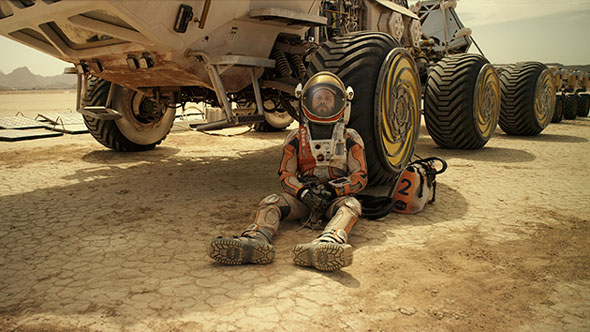
Studio Daily is pulling together some great interviews in the run up to the Oscars, and this conversation with VFX Supervisor Richard Stammers provides some really interesting details on the challenges he and his team had to overcome to pull off the epic VFX in The Martian. It’s really interesting to hear that the toughest challenge was getting the colour of Mars, just right – which invariably involved many blue sky replacements.
Ridley Scott is famous for drawing “RidleyGrams.” Did he do many drawings for this film?
He storyboarded the entire movie. He started with four or five drawings per page on the script, and then he filled in the blanks. He’d sit with the previs team and me and in an hour would draw the remaining storyboards. He was drawing something every day on set. Even in post, he’d look at an edit, print out a frame grab, and draw on top. When the rover drives across the flat plain, Ridley did a felt-pen sketch on top of the plate to show where he’d like the dust devils.
The Martian User Interface Design
Territory Studios, the masterminds behind the UI design in many many films, have put together a nice little reel of their work from The Martian, which you can check out in full here.
Working closely with NASA, Territory developed a series of deft and elegant concepts that combine factual integrity and filmic narrative, yet are forward looking and pushing NASA’s current UI conventions as much as possible.
Territory’s plot-based graphics includes identities and visual languages for each set, and include images, text, code, engineering schematics, 3D visualisations based on authentic satellite images showing Martian terrain, weather, and mission equipment served across consoles, navigation and communication systems, laptops, mobiles, tablets, and arm screens throughout.
UPDATE – In-depth Interview with Territory Studios
I had the good fortune to sit down with Territory Studio’s co-founder and creative director, David Sheldon-Hicks, to find out just how they create all this visual goodness, on a tight timeframe!
There is a process to it, there is a structure, and it’s not that easy to do what we do. For instance, on Avengers, we did a lot of detailed work on that film, but the graphics that people are viewing, which might be a 20 second screen graphic on a loop. That will have been designed and animated in under a day.
So it’s not only producing that quality of work, it’s doing that quality of work under the time pressures that we have here. And our artists are quite unique in that respect.


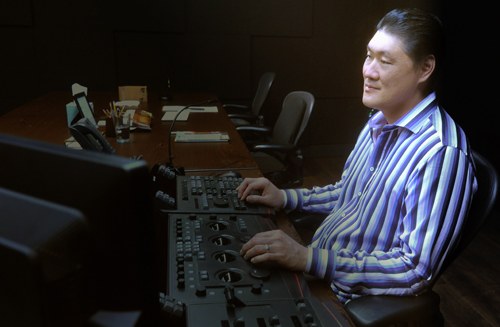

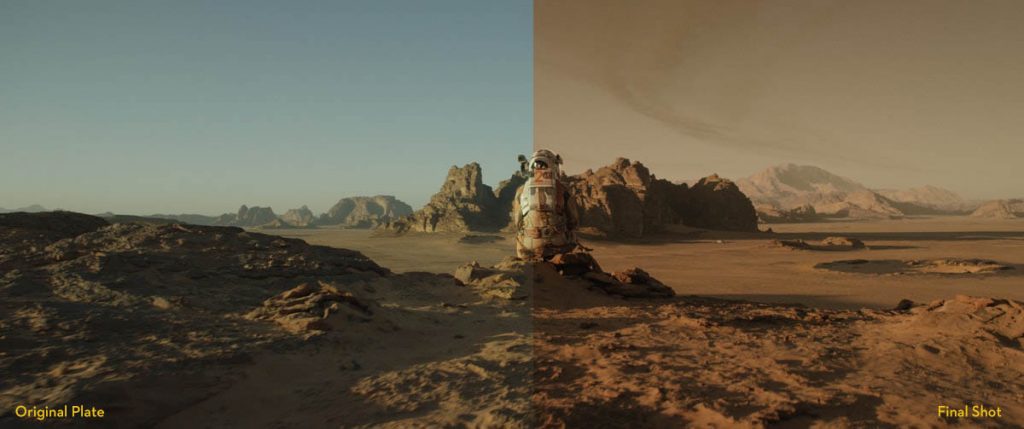


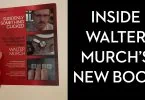

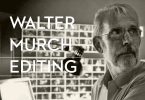

I’ve just discovered your blog. Great stuff! Loving the ‘The Making Of’ series. I’d love to see it turned into YouTube videos. Have you ever thought about it? Anyway, here’s a great podcast about a track from the soundtrack of the Martian. https://soundcloud.com/hrishihirway/song-exploder-the-martian I think you’ll like it
Thanks Michal! YouTube videos are a good idea